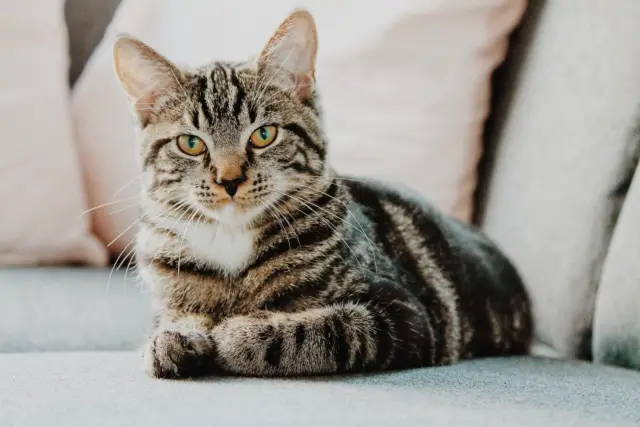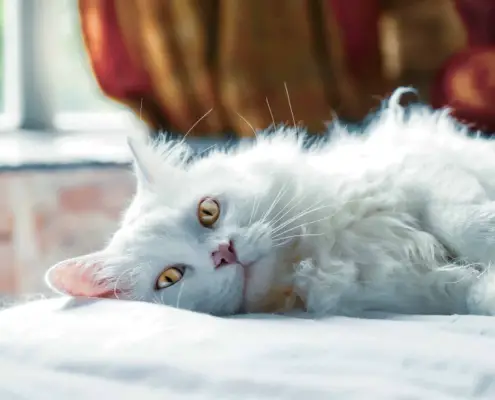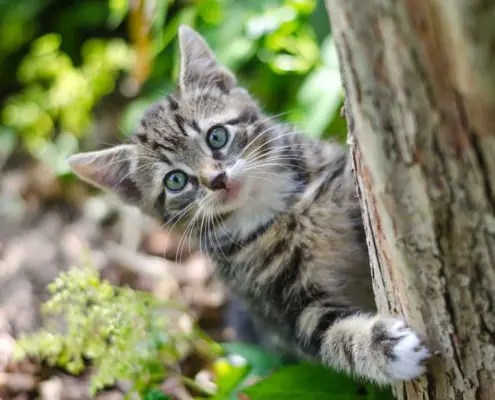
When it comes to cats, their coloration is not just a matter of aesthetics; it holds a deeper significance. The wide range of colors and patterns seen in cats is a result of various genetic and evolutionary factors. Understanding these factors can provide valuable insights into a cat’s breed, health, and even cultural symbolism. In this article, we will delve into the importance of cat color type and explore the fascinating world of feline genetics and evolution.
The Genetic Basis of Cat Coloration
Cat coloration is primarily determined by the genes inherited from their parents. These genes control the production and distribution of pigments in a cat’s fur, resulting in different color patterns. The genes responsible for coloration are located on the X chromosome, which explains why certain color types are more prevalent in either male or female cats. For example, the gene for orange fur is carried on the X chromosome, making it more common in male cats.
The genetic basis of cat coloration extends beyond simple inheritance patterns. Genetic mutations can give rise to unique color variations, such as the strikingly blue eyes of the Siamese cat or the distinctive spots of the Bengal cat. These mutations occur spontaneously and can be passed down to future generations, contributing to the diverse range of cat color types we see today.
Evolutionary Factors Influencing Cat Color Type
Cat coloration has evolved over thousands of years, driven by various factors such as camouflage, sexual selection, and environmental adaptation. In the wild, the coat color of a cat plays a crucial role in its survival. For instance, cats living in forested areas often have patterns that resemble the dappled sunlight filtering through the trees, allowing them to blend seamlessly into their surroundings and remain hidden from potential predators or prey.
Sexual selection also plays a role in determining cat color types. Some studies suggest that certain color patterns, such as the tabby stripes, may have evolved as signals of good health and reproductive fitness. Female cats may prefer mates with these patterns, leading to their increased prevalence in certain populations. This evolutionary pressure has shaped the diversity of cat color types we observe today.
The Significance of Cat Color Type in Cat Breeds
Cat color type is of great importance in cat breeding. Different breeds have distinct color standards that define the ideal coloration for that particular breed. Breeders carefully select cats with the desired color types to maintain the breed’s integrity and meet the expectations of cat enthusiasts. For example, the Persian cat breed is known for its long, luxurious fur and comes in various color types, including solid, tabby, and bicolor.
The significance of cat color type in breeding goes beyond aesthetics. Certain color types may be associated with specific genetic traits or health conditions. For instance, white cats with blue eyes are more prone to deafness, while orange cats have a higher likelihood of being male. By understanding the relationship between cat color type and health concerns, breeders can make informed decisions to promote the overall well-being of their feline companions.
Cultural and Symbolic Meanings of Cat Color Type
Throughout history, cat color types have held cultural and symbolic meanings in different societies. In ancient Egypt, for example, the black cat was revered and considered a symbol of good luck and protection. In contrast, the superstition surrounding black cats developed in Europe during the Middle Ages, associating them with witchcraft and bad omens. These cultural perceptions of cat color type have influenced the way cats are viewed and treated in various parts of the world.
Symbolism surrounding cat color types is not limited to superstitions. In literature and art, certain colors or patterns may be used to convey specific emotions or characteristics. The sleek black cat is often depicted as mysterious or bewitching, while the playful tabby may represent curiosity and agility. These symbolic associations add depth and meaning to our perception of cats and their color types.
Common Cat Color Types and Their Characteristics
Cat color types encompass a wide spectrum, ranging from solid colors to intricate patterns. Some of the most common cat color types include:
- Solid: These cats have a uniform color throughout their fur, without any visible patterns. Solid color types include black, white, gray, and brown.
- Tabby: Tabby cats have distinctive stripes, spots, or swirls on their fur. They come in various color combinations, such as brown tabby, silver tabby, and orange tabby.
- Tortoiseshell: Tortoiseshell cats have a unique mix of colors, primarily black and orange patches. These cats are almost exclusively female due to the genetic inheritance of the orange fur gene.
- Calico: Calico cats are predominantly white with patches of black and orange. Like tortoiseshell cats, they are mostly female.
- Siamese: Siamese cats are known for their striking blue eyes and creamy coat with dark points on the face, ears, paws, and tail.
Each cat color type has its own characteristics and allure, making them uniquely captivating companions.
Cat Color Type and Health Concerns
While cat color type adds to the beauty and diversity of feline companions, it can also be associated with certain health concerns. As mentioned earlier, white cats with blue eyes are more prone to deafness due to a genetic predisposition. Additionally, cats with excessive white fur, such as the white Persian, may be more susceptible to skin cancer caused by sun exposure. It is crucial for cat owners to be aware of these potential health risks and take appropriate measures to protect their beloved pets.
Breeders also need to consider the impact of selective breeding for specific cat color types on the overall health of the breed. Focusing solely on achieving certain aesthetic standards may inadvertently lead to the propagation of genetic disorders or compromised immune systems. Responsible breeding practices should prioritize the health and well-being of cats above all else.
Breeding for Specific Cat Color Types
Breeding for specific cat color types requires careful selection and planning. Breeders aim to produce offspring that adhere to the breed’s color standards and exhibit desirable characteristics. This involves understanding the inheritance patterns of cat coloration genes and conducting selective breeding to achieve the desired outcomes.
In some cases, breeders may introduce genetic mutations to create new color variations or patterns. These mutations can add novelty and uniqueness to a breed, but they must be carefully monitored to ensure they do not result in detrimental health effects. Breeding for specific cat color types requires a delicate balance between preserving the breed’s heritage and promoting the overall well-being of the cats involved.
Cat Color Type in Popular Culture and Media
Cat color types have permeated popular culture and media, captivating audiences worldwide. From famous fictional feline characters like Garfield and Felix the Cat to internet sensations like Grumpy Cat and Maru, cat coloration plays a significant role in their iconic appeal. The sleek black cat is often associated with witchcraft and mystery in films and literature, while the orange tabby has become synonymous with mischievous and adventurous traits.
In addition to entertainment, cat color types are also celebrated in various cat shows and competitions. These events showcase the beauty and diversity of different breeds and provide a platform for breeders and cat enthusiasts to share their passion. The fascinating world of cat color types continues to captivate and inspire people across different forms of media and artistic expressions.
Conclusion
The significance of cat color type goes far beyond mere aesthetics. Understanding the genetic and evolutionary factors at play allows us to appreciate the rich diversity of cat coloration and its implications for breed health, cultural symbolism, and even popular culture. Whether it’s the regal elegance of a solid-colored Persian or the playful charm of a tabby, each cat color type tells a unique story. By embracing and respecting these variations, we can deepen our connection with these beloved feline companions and nurture a greater appreciation for the beauty and complexity of nature’s designs.
If you enjoyed my article, I would appreciate you sharing it with your network.

Sima Ndlebe
Sima writes for CatBuzz. He is interested in Cats, Health and Fitness, and Entrepreneurship.
Published: 13 October 2023



